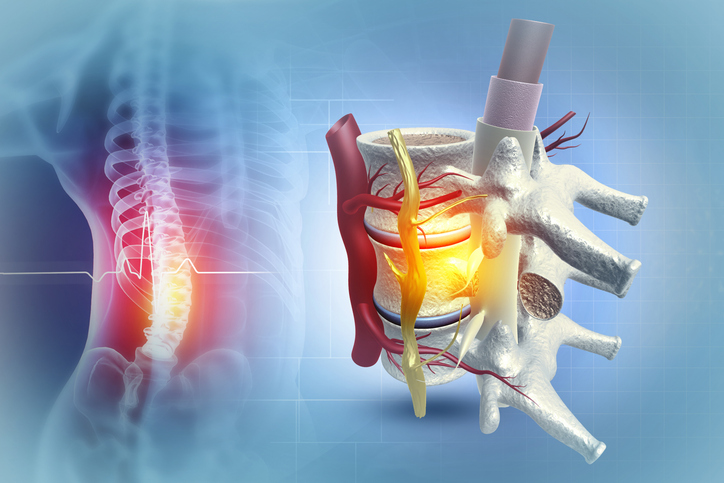Researchers at the University of California San Diego (UCSD) School of Medicine have leveraged bioinformatics to identify a potential new treatment for spinal cord injury (SCI). Using a computational platform to match gene expression patterns linked to neural regeneration with thousands of known drugs, the team identified thiorphan, the active metabolite in the drug racecadotril for treating gastrointestinal disorders, as a promising candidate for restoring function after SCI. The research is published in the journal Nature.
“We were very happy to see that a drug that worked on cells in culture also showed effectiveness in an actual animal model of spinal cord injury,” said first author Erna van Niekerk, PhD, an assistant project scientist in the Department of Neurosciences at UCSD School of Medicine. “This is not always the case in new drug development.”
The team’s findings showed that thiorphan promoted neuronal growth in adult human brain cells and improved motor system recovery in animal models following spinal cord injury. The success of this approach to identify a novel therapy for SCI provides a model for how computational biology can help identify existing drugs to treat neurological conditions and accelerate the development of new therapies.
For their work, the UCSD researchers first studied the genetic activity of neurons that are able to regenerate in mouse model. Earlier research by the team discovered that certain corticospinal motor neurons, neurons that guide voluntary movement, revert to an embryonic-like genetic state to foster axon regrowth after an injury. After identifying this process, the team then turned to their bioinformatics computational platform to screen thousands of drugs like ones that could mimic this pattern of regeneration.
“We previously identified an embryonic shift in the corticospinal motor neuronal transcriptome after spinal cord injury associated with successful axonal regeneration. Exploiting this transcriptional regenerative ‘signature,’ here we used in silico screens to identify small molecules that generate similar shifts in the transcriptome, and identified thiorphan—a neutral endopeptidase inhibitor—as a lead candidate,” the researchers wrote.
To verify thiorphan’s potential as an SCI treatment, the investigators tested it on cultures of adult motor cortex neurons and noted that among all potential drug candidates, it “exhibited the greatest efficacy in supporting total neurite outgrowth and longest neurite length in this medium-throughput screen.”
Testing of thiorphan in rats with severe spinal cord injury resulted in them regaining approximately 50% more hand function than untreated rats. When combined with neural stem cell grafts, this treatment produced an additional 50% improvement in recovery and produced greater neuronal regeneration into the lesion site. “Direct thiorphan infusion into the motor cortex was safe and effective in this experiment, and effects on neurite outgrowth were confirmed in adult rhesus monkey and human cortical cultures,” the researchers wrote.
The bioinformatics pipeline used in the study relied on integrating several technologies including gene sequencing, computational bioinformatics, and cell culture. The approach was able “to rapidly identify a potentially useful treatment that might have taken decades before these convergent technologies were available,” van Niekerk noted.
The UCSD team’s computational screening approach built upon previous research using in silico analysis to identify molecules that improved neural repair in peripheral nerve injury.
“This platform can be applied broadly to other CNS disorders, potentially yielding several new candidate drugs to treat CNS injury and neurodegenerative disorders using compounds that have already been tested in humans for other indications and have yielded evidence of safety,” the researchers wrote. Because many human trials fail due to safety issues, the researchers said that using previously tested compounds “can de-risk new drug development considerably.”
Future studies will look for more efficient delivery of thiorphan, including discovering whether it can cross the blood–brain barrier or be administered systemically. The team is currently optimizing thiorphan and synthesizing new derivatives of the drug with enhanced brain permeability to prepare for in-human clinical testing.

